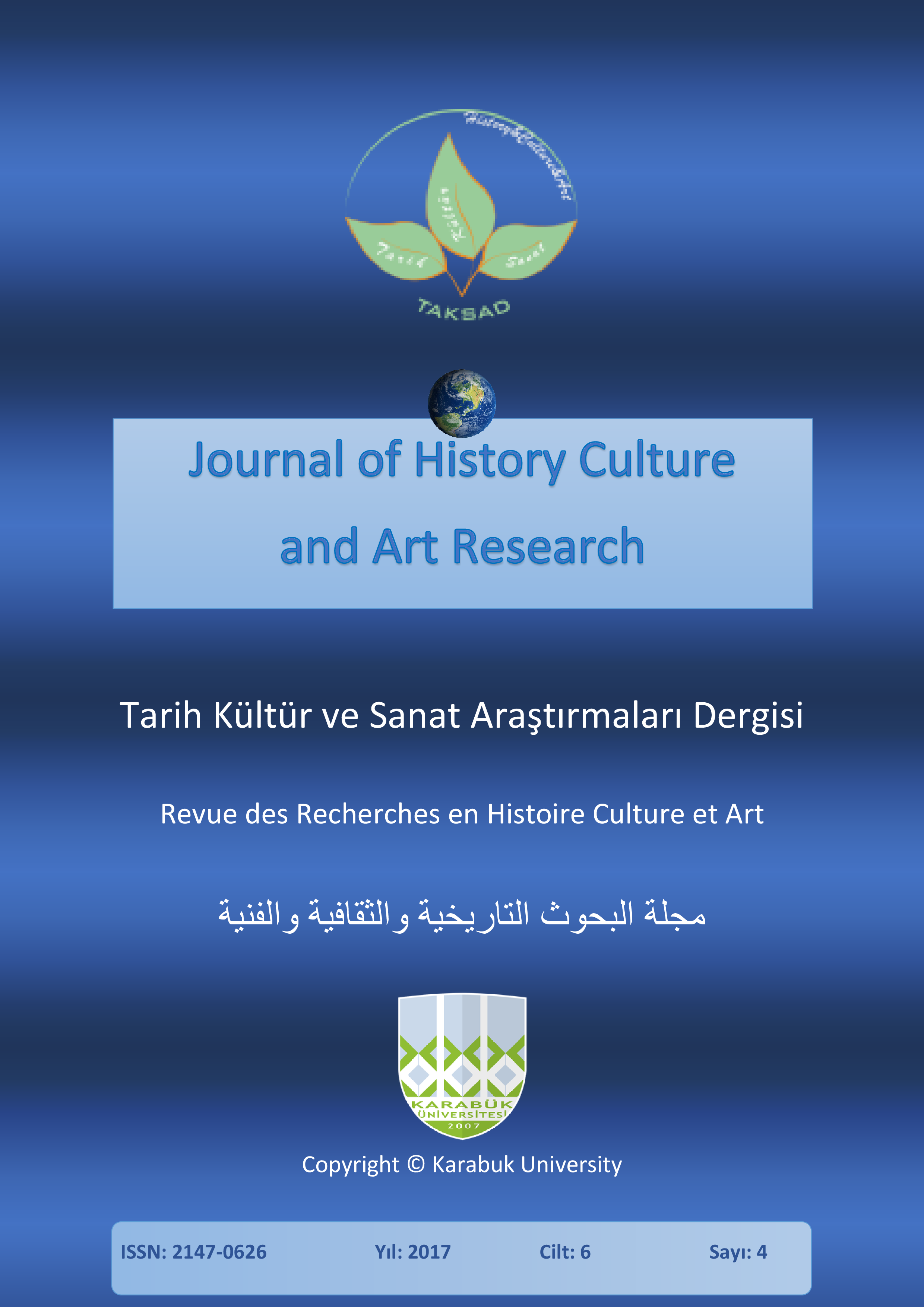Figurative Potential of Russian Hydronymes in the Poetry of 19th – 20th Centuries
DOI:
https://doi.org/10.7596/taksad.v6i4.1117Keywords:
Poetic text, The aesthetics of linguistic units, Figurative potential of hydronyms Dnieper, Don, Volga, Neva, Figurative paradigms, Types of paradigms.Abstract
The article studies the peculiarities of Dnieper, Don, Volga and Neva hydronyms use as aesthetically significant elements of an artistic text. The urgency of the work is that the development of language and speech aesthetics issues are among the promising trends of linguistic studies. However, the aesthetic resources of most onomastic units, including toponyms, are still poorly studied. The purpose of this study is to analyze the figurative possibilities of these hydronyms, functioning in the poetic works of Russian authors. The following methods were used as the main ones in the work: modeling, distributive, semantic-stylistic and quantitative analysis. The material for the study was represented by the poetic works of the 19-20th centuries, extracted from the "National Corpus of the Russian Language". The novelty of the work was made up of selected figurative paradigms, in which the considered hydronyms are used as the subject of comparison. During the performed study five most voluminous figurative paradigms were revealed, in which the position of the right member is replaced by lexical units related to the concepts of "being", "water", "substance", "tissue" and "terrestrial space". The criteria of intentional rapprochement of hydronyms with other subject lexemes were determined in order to develop the imagery of a poetic text. The findings can be used to study the onomastic space of Russian language, as well as for the further development of artistic speech theory.
References
Berger, D. (1993). Geographische Namen in Deutschland: Herkunft und Bedeutung der Namen von Ländern, Städten, Bergen und Gewässern. Mannheim – Leipzig – Wien – Zürich.
Bochina, T. G. & Starostina, O. V. (2016). Metaphor of water in the silver age poetry. Journal of Language and Literature, 7(3), 104-108.
Brozović, R. D. & Virč, I. (2015). Jezični slojevi i struktura međimurske hidronimije [Linguistic stratification and the structure of the hydronymy of Međimurje]. Slavia Centralis, 2, Maribor, 5–19.
Fossat, G. (2012). Les noms de l’eau en Vaucluse. Toponymie et hydronymie. Paris: L’Harmattan.
Garipova, F. T. (1991). Research on hydronymy of Tatarstan [Issledovaniya po gidronimii Tatarstana]. Moscow: Nauka.
Greule, A. (2014). Deutsches Gewässernamenbuch. Etymologie der Gewässernamen und der dazugehörigen Gebiets-, Siedlungs- und Flurnamen. [Namebook of German rivers. Etymology of hydronyms and associated choronyms, oikonyms and microtoponyms]. Berlin: De Gruyter.
Mukhamadiarova, A. F. & Ayupova, R. A. (2016). Concept «Love» In American and Tatar female poetry. Journal of Organizational Culture, Communications and Conflict, 20, Special Issue, 234-241.
Ozhegov, S. I. & Shvedova, N. Yu. (2007). Dictionary of Russian language: 80000 words and phraseological expressions [Tolkovyj slovar russkogo yazyka: 80000 slov i frazeologicheskih vyrazhenij]. Moscow: A TEMP.
Pavlovich, N. V. (1995). The language of images. Paradigms of images in Russian poetic language [Yazyk obrazov. Paradigmy obrazov v russkom poehticheskom yazyke]. Moscow: Tipografiya Rosselhozakademii.
Podolskaya, N. V. (1983). Typical East Slavic toponyms: Word-formation analysis [Tipovye vostochnoslavyanskie topoosnovy. Slovoobrazovatelnyj analiz]. Moscow.
Sadrieva, K. E. & Erofeeva, I. V. (2016). Representation of human's image by using word pp -formation resources in the language of Russian chronicles (using the example of nouns with suffixes -(ьн)икъ). Journal of Language and Literature, 7(1), 203-206.
The National Corpus of the Russian Language [Electronic resource]. Retreived on 15.05.2017 http://www.ruscorpora.ru/search-poetic.html
Toporkov, A. L. (1995). River [Reka]. Slavic mythology. Encyclopedic Dictionary [Slavyanskaya mifologiya. Ehnciklopedicheskij slovar]. Moscow: Ellis Luck.
Udolph, J. (1979). Studien zu slavischen Gewässernamen und Gewässerbezeichnungen. Ein Beitrag zur Frage nach der Urheimat der Slaven. Heidelberg: Carl Winter Universitätsverlag.
Vanagas, A. (1970). Lietuvos TSR hidronimų daryba. Vilnius. Leid. Mintis.
Yurkiv, М. М. (2002). Hydronimic Parallels in the Western Ukranian Onomasticon [Гідронімно-ойконімні паралелі в Західноукраїнському ономастиконі]: abstract of candidate of philology dissertation. Kharkiv.
Downloads
Published
How to Cite
Issue
Section
License
All papers licensed under Creative Commons 4.0 CC-BY.- Share — copy and redistribute the material in any medium or format
- Adapt — remix, transform, and build upon the material for any purpose, even commercially.
Under the following terms:
Attribution — You must give appropriate credit, provide a link to the license, and indicate if changes were made. You may do so in any reasonable manner, but not in any way that suggests the licensor endorses you or your use.
- No additional restrictions — You may not apply legal terms or technological measures that legally restrict others from doing anything the license permits.







